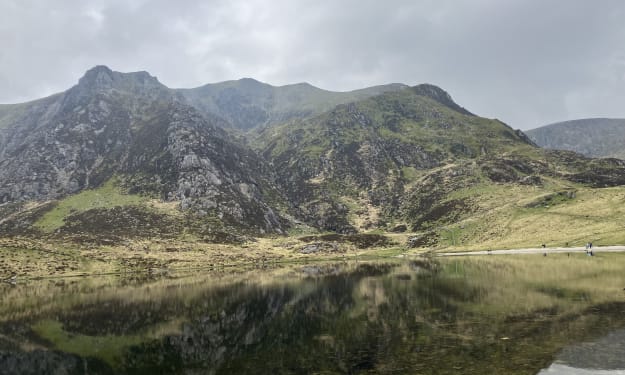Biggest Secret of the Titanic Iceberg
Based on findings Revealed by Scientists

A monstrous white shape is caught in the light beam as the faithful iceberg is about to rend the side of the legendary ship. The Titanic is silently making its way through the waves with its passengers asleep when suddenly a beam of electric light appears here in the darkness over the calm waters of the Atlantic Ocean.
On April 14, 1912, just two days before someone would capture a picture of a massive iceberg with an odd elliptical shape, it was discovered that the iceberg had most likely formed from snow that had fallen 100,000 years earlier. Researchers used computer modelling and data to determine the iceberg's origin.
These days, it's possible to calculate the roots of such icebergs in any given year in the past, so the infamous chunk of ice was on its way from Greenland to an area further south from Cornwall if the ship had passed through that region only two days later, the iceberg would have moved. The iceberg was likely a part of a small cluster of glaciers in Southwest Greenland.
The iceberg was 400 feet long and more than 100 feet of its surface was above the water when the Titanic sank. Some people believe it was a super moon that caused the Titanic to sink that night. There was a rare lunar event that hadn't happened for 1400 years. Under normal circumstances, the iceberg would have sunk the Titanic. However, because of the super moon, the iceberg would have risen above the water.
There is a specific type of bacteria that slowly consumes the Titanic wreckage due to salt corrosion, ocean currents, freezing temperatures, and other factors, so the super moon may have caused an unusually high tide that pulled the iceberg away from the glacier much faster than usual. Additionally, this rust-eating microorganism may consume the entire wreckage.
Dorothy Gibson, an American actress, was a passenger on the Titanic. She survived, and soon after arriving in New York, she began filming a movie called rescued from the Titanic. The movie was only released one month after the Titanic sank.
The movie was a tremendous hit at the time, but the only copy that was known was destroyed in a fire. She even donned the same shoes and clothing that she had on during the actual incident.
A novella called futility, which was published 14 years before the Titanic sank, appeared to have predicted the entire event. The plot revolved around a fictional ship called the Titan, which sank during its voyage. The Titan was almost the same size as the Titanic, and they both went to the bottom in April. Both the real and fictional ships were described as unsinkable.
We've seen it in the movie, but there were some real-life love stories happening on the Titanic too thirteen couples even took a trip on the ship as part of their honeymoon one of the couples on Macy's department store in New York once it became clear the Titanic was rapidly sinking, the woman refused to go into a lifeboat without her husband. Later, it was discovered that the lifeboats were nowhere near enough.
Some people believe Titanic sank because of a mummy not an iceberg it all began around 1000 BCE with a mysterious woman who lived in Egypt in the city of Thieves people knew little about her but they called her a priestess her mummy was put in a wooden sarcophagus and covered with a large lid with the image of her face and some mystical inscriptions as for the woman herself she decided to stay with her husband until the end But that day, the mummy vanished into thin air.
A few decades later, a group of wealthy English friends travelled to Egypt and discovered the empty mummy casket with the image of the Priestess, whose dark eyes appear to be gazing into nothing. They decided to purchase it, but the buyer vanished the same night before he even received the case, and every member of the group experienced some mishaps. The coffin moved around a bit before, according to some, ending up aboard the Titanic; it took more than 70 years for a robot submarine to discover the remnants of this fabled ship; the wreck is located over 13 000 feet beneath the surface of the Atlantic Ocean. Split into two equal halves Nobody is quite sure what caused the liner to disintegrate, but some speculate that it was caused by water that got inside during the ship's collision with the iceberg. The pressure was so intense that it split the ship's bottom structure into two sections. Others claim that the hull rivets' high percentage of slag or smelting residue, which is something that can cause the metal to split apart, was to blame.
The ship had numerous faults overall, beginning with the design where the top watertight bulkheads weren't properly sealed. This made it possible for water to pass between the compartments and eventually sink. The Ship's Iron Rivets, or the Vessel Due to the steel's deterioration from high sulfuric content, cold temperatures, and high speeds, Titanic sank 24 times faster than it would have otherwise. If the ship had struck the iceberg head-on rather than ramming it with its side, it likely would have remained afloat. Why didn't the crew have binoculars? They would have undoubtedly helped them spot the iceberg in time and may have saved the ship. SS Californian, a ship that was relatively close to Titanic, sent a message to inform them it had stopped due to a dense ice field, but the warning never reached the Titanic's captain; some experts believe it was lost in the mail. However, even without the binoculars, the ship might have had some time to change course and avoid the collision if the crew had received any warning.
Optical illusion prevented people from spotting the iceberg in time, and the night's air conditions may have caused super refraction, which might have disguised the bird. After all, no one truly noticed the iceberg until it was too close to the ship to escape the collision. The time from when they first saw the iceberg and when they collided was only 37 seconds, and the Titanic took 2 hours and 40 minutes to submerge beneath the waves.





Comments
There are no comments for this story
Be the first to respond and start the conversation.